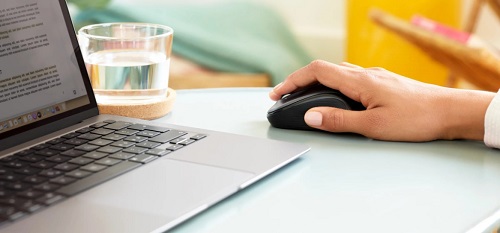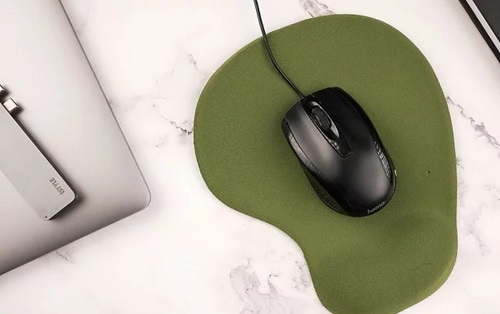Knowing how to use mouse on touch screen laptop can greatly enhance your productivity. Whether you’re working on detailed graphic design, extensive data entry, or simply navigating your device, a mouse offers precision and ease of use that complements the touch screen interface. This guide will walk you through the benefits of using a mouse with your touch screen laptop, how to connect one, best practices for usage, and tips to optimize your workflow. By following these steps, you can ensure that you get the most out of your touch screen laptop setup.

Why Use a Mouse on a Touch Screen Laptop?
A mouse provides precision that is often required for tasks like graphic design, gaming, and detailed document editing. While touch screens are convenient for many actions, the fine control a mouse offers can significantly enhance your experience. Using a mouse also reduces the strain on your hands from continuous touch screen usage, which can be beneficial for long work sessions. Additionally, it allows for faster navigation through multiple windows and applications, improving overall productivity.
How to Connect Mouse to Touch Screen Laptop Step by Step?
Connecting via Bluetooth
Step 1: Turn on the Bluetooth Mouse and Enable Pairing Mode To begin, switch on your Bluetooth mouse. Most mice have a dedicated button or switch to enable Bluetooth pairing. Refer to the manufacturer’s instructions if necessary. Ensure that the mouse is in pairing mode, usually indicated by a flashing light.
Step 2: Activate Bluetooth on Your Laptop Next, go to your laptop’s settings menu and find the Bluetooth section. Turn on Bluetooth if it isn’t already enabled. Your laptop will start scanning for nearby Bluetooth devices. Select your mouse from the list of available devices. A prompt may appear asking for a PIN; if so, enter the default PIN provided in the mouse’s manual.
Step 3: Confirm the Connection Once paired, your mouse should be ready to use. Move it to check if the cursor responds on your laptop screen. If there are any issues, revisit the Bluetooth settings and ensure the mouse is correctly paired.

Using a USB Mouse
Step 1: Choose the Appropriate USB Port Identify a free USB port on your laptop. Most laptops have multiple USB ports, typically located on the sides. Plug the USB receiver from your mouse into one of these ports. If your mouse has a built-in cable, simply connect it directly to the port.
Step 2: Install Necessary Drivers Upon connecting, your laptop may prompt you to install necessary drivers. Follow the on-screen instructions to complete the installation. In many cases, the drivers install automatically, and your mouse becomes operational immediately.
Step 3: Test the Mouse Functionality Once connected, move your mouse to see if the cursor moves accordingly on your screen. If the mouse isn’t working, ensure the USB connection is secure and check for driver updates through your laptop’s device manager.
What Are the Best Practices for Using a Mouse on a Touch Screen Laptop?
Ergonomics and Setup
Positioning your mouse and laptop correctly is crucial to prevent strain on your wrist and arm. Place your mouse at the same level as your keyboard to avoid awkward angles. A mouse pad with wrist support can provide additional comfort and help maintain a neutral wrist position. Ensure your chair and desk are adjusted to support a healthy posture; your feet should be flat on the floor, and your elbows should be at a 90-degree angle. Keeping your monitor at eye level can also reduce neck strain. Taking these steps will help you work comfortably for extended periods.
Customizing Mouse Settings
Customizing your mouse settings can significantly improve your efficiency and comfort. Access your laptop’s control panel or settings menu to adjust the pointer speed, ensuring it moves smoothly and accurately. You can also modify the scrolling behavior to suit your preferences, such as changing the number of lines the screen scrolls with each movement. Additionally, customize the button functions; many mice have additional buttons that can be programmed for specific tasks, like opening applications or executing shortcuts. These adjustments can enhance your overall user experience and productivity.
Using Shortcuts and Gestures
Learning and using keyboard shortcuts and mouse gestures can greatly enhance your efficiency. Many mice come with programmable buttons that you can customize for specific functions, such as copying and pasting, opening frequently used programs, or navigating between applications. Additionally, familiarize yourself with common keyboard shortcuts that complement mouse use, like Ctrl+C for copy and Ctrl+V for paste. Some advanced mice also support gestures, where specific movements perform actions like zooming or switching between tabs. Utilizing these features can streamline your workflow and save valuable time.
How to Optimize Your Workflow with a Mouse on a Touch Screen Laptop?
Integrating a mouse with your touch screen laptop capabilities can significantly enhance your productivity. For example, use the mouse for precision tasks like editing documents, designing graphics, or navigating complex spreadsheets. The mouse allows for more accurate selections and finer control, making these tasks more efficient. Meanwhile, rely on the touch screen for quick navigation, scrolling through long documents, or using multi-touch gestures for zooming in and out of images and maps. This combination leverages the strengths of both input methods, providing a versatile and efficient workflow. Create a balanced workflow by alternating between the mouse and touch screen. For instance, use the touch screen to quickly open applications or switch between tasks, then switch to the mouse for detailed work. This approach reduces strain on your hands and wrists by varying the type of movements you perform. By effectively combining the use of a mouse and touch screen, you can create a seamless and efficient workflow, maximizing your productivity on a touch screen laptop.
Conclusion
Using a mouse with your touch screen laptop offers numerous benefits, from improved precision to enhanced productivity. By following the steps outlined in this guide on how to use a mouse on a touch screen laptop, you can easily connect and optimize a mouse for your laptop. Remember to consider ergonomic setups and customize your mouse settings for the best experience. Combining the strengths of a touch screen with the precision of a mouse creates a versatile and efficient computing environment. Embrace this dual approach to elevate your daily tasks and work smarter, not harder. Knowing how to use mouse on touch screen laptop effectively can significantly enhance your workflow and reduce strain, making your computing experience more comfortable and productive. By integrating these practices, you can make the most of your touch screen laptop and enjoy a seamless and efficient user experience.
FAQs
1: Can I use any mouse with a touch screen laptop?
Yes, you can use any standard mouse with a touch screen laptop, as long as it is compatible with your laptop’s operating system and has the necessary connectivity options, such as Bluetooth or USB.
2: How do I fix my mouse if it stops working on my touch screen laptop?
First, check the connection and ensure the mouse is powered on. If using a Bluetooth mouse, make sure it is paired correctly. For USB mice, try reconnecting the receiver or cable. Updating or reinstalling the mouse drivers can also resolve issues.
3: Are there specific mice designed for touch screen laptops?
While there aren’t mice specifically designed for touch screen laptops, some models offer features like Bluetooth connectivity and programmable buttons that enhance their compatibility and functionality with touch screen devices.
